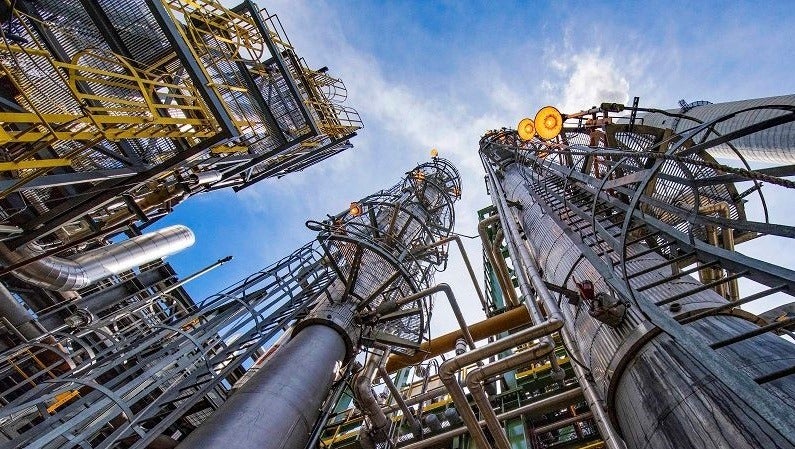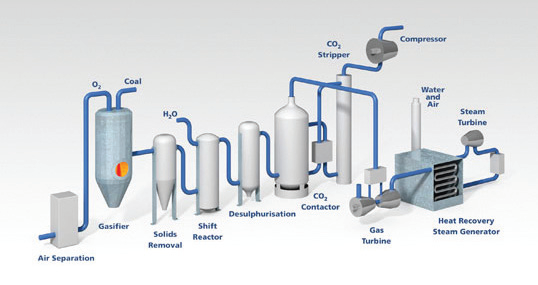
Carbon capture and storage technology (CCS) has been hailed as a key component in the world’s shift towards renewable energy.
With global CO2 emissions hitting a historic high last year, growing by more than 1.3% to a record of more than 33 billion tonnes, the need for tools that can help limit pollution has never been greater.
The Global CCS Institute claims CO2 emissions from fossil fuel combustion in the energy sector contribute roughly 30% to the amount of the pollutant present in the EU, specifically.
Renewable energy presents a possible solution to this, but its ability to cater the world’s power demand, which is expected to rise by 50% by 2030, according to the UK’s Carbon Capture and Storage Association (CCSA), is up for debate – this is where CCS comes in.
“The International Energy Agency recently concluded that, to meet the goals of the Paris Agreement, CCS will need to contribute 32% of the extra effort to move from a 2C scenario to well below 2C,” said Luke Warren, spokesperson for the CCSA.
“The Intergovernmental Panel on Climate Change (IPCC) has estimated that without CCS, the cost of trying to meet global climate change goals will increase by almost 140%. We haven’t got a choice, CCS must be deployed.”
Here we take a closer look at CCS and how it works.
What is carbon capture and storage technology?
CCS is a technology reportedly capable of capturing up to 90% of the CO2 emissions produced by the burning of fossil fuels to generate electricity, as well as those used in industrial processes, and prevent it from polluting the atmosphere.
Fossil fuel power plants can be built with the technology already integrated or it can also be combined with renewable biomass to create a “carbon-negative” mode the goes one step further by actually removing CO2 from the planet.
The Global CCS Institute says there are 18 large-scale CCS facilities currently in operation, with an additional five under construction.
Some carbon storage facilities date back multiple decades, such as the Sleipner project in the North Sea, while others remain under construction, like the Gorgon project in Western Australia.
First, CCS involves capturing CO2, before transporting it to be stored in geological rock formations thousands of metres below the Earth’s surface.
The initial part of the process involves separating CO2 from the gasses produced in power generation and industrial processes, such as manufacturing cement or steel, by pre-combustion capture, post-combustion capture or oxy-fuel combustion.

The pollutant is then transporting using either a pipeline or a ship in much the same way the millions of tonnes of CO2 are transported each year for various commercial purposes, chiefly by countries such as the US.
It is then stored in depleted oil and gas fields or deep saline aquifer formations, which the Intergovernmental Panel on Climate Change (IPCC) says can retain 99% of the pollutant over a 1000-year period.
The CCSA says: “At every point in the CCS chain, from production to storage, industry has at its disposal a number of process technologies that are well understood and have excellent health and safety records
“The commercial deployment of CCS will involve the widespread adoption of these techniques, combined with robust monitoring techniques and government regulation.”
Capturing CO2
Pre-combustion capture
Pre-combustion systems, as provided by manufacturing companies such as British engineering firm Costain, convert solid, liquid or gaseous fuel into a blend of hydrogen and CO2 using processes like “gasification” or “reforming”.
This can then be used to fuel electricity production, and the CCSA claims it will be able to power vehicles and provide heating, with extremely low emissions, in the future.

Post-combustion capture
Post-combustion capture involves capturing the CO2 from the exhaust of a combustion system and absorbing it into a solvent, before removing and compressing the pollutant elements.
CO2 can also be separated using high-pressure membrane filtration, as well as cryogenic separation processes.
Oxy-fuel combustion
Using oxy-fuel combustion, oxygen is separated from the air before combustion, with the fuel then being combusted in oxygen using recycled flue-gas.
This creates an atmosphere full of oxygen and nitrogen with flue-gases comprising CO2 and water, allowing for easier purification of the former.
Transporting CO2
Transporting captured CO2 involves many of the same techniques as used for oil and natural gas, including road tankers, ships and pipelines.
Many of the networks in use today have been operational for more than 30 years, providing safe and regulation-consistent methods of getting the pollutant from A to B.

The CCSA says: “There is significant potential for the development of local and regional CCS pipeline infrastructure, leading to CCS ‘clusters’ where CO2-intensive industries could locate.
“Developing clusters, where infrastructure can be shared by a number of industrial sources of carbon dioxide emissions, will result in the most cost-effective way to deliver CCS infrastructure development and ultimately lower costs to consumers.”
Storing CO2
Storage sites for captured CO2 range from defunct oil and gas fields to underground saline formations, porous rocks filled with salt water, while it can also injected into depleting oil fields to increase their output.

After being injected into such a formation, the CO2 is trapped by a layer of impermeable rock, known as the cap rock, preventing it from entering and polluting the atmosphere above in a process referred to as “structural storage.”
Deep saline aquifers offer the greatest storage capacity over the long term, according to the CCSA, but remain a relative unknown in many areas.






